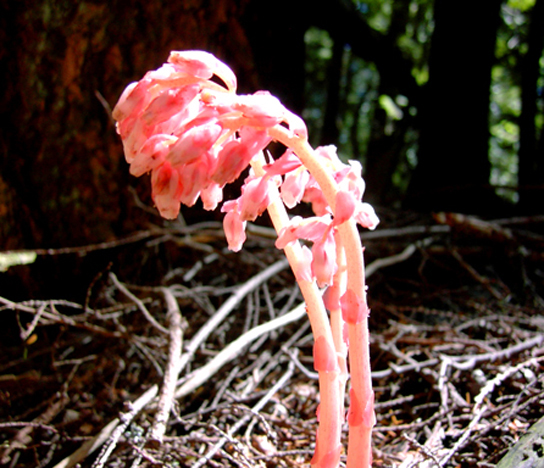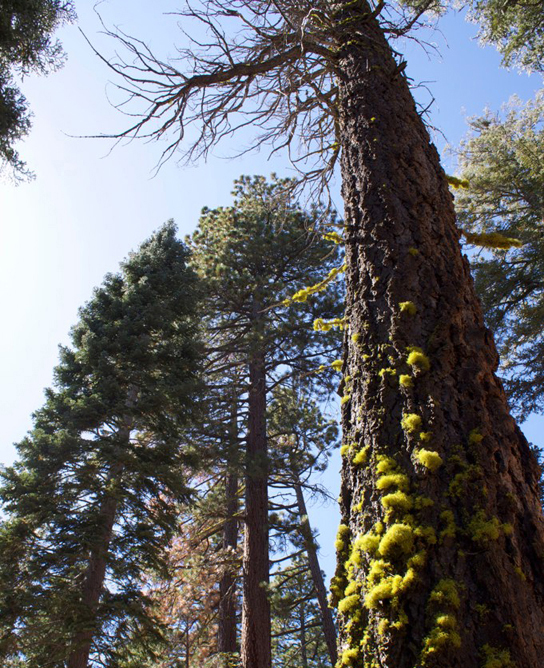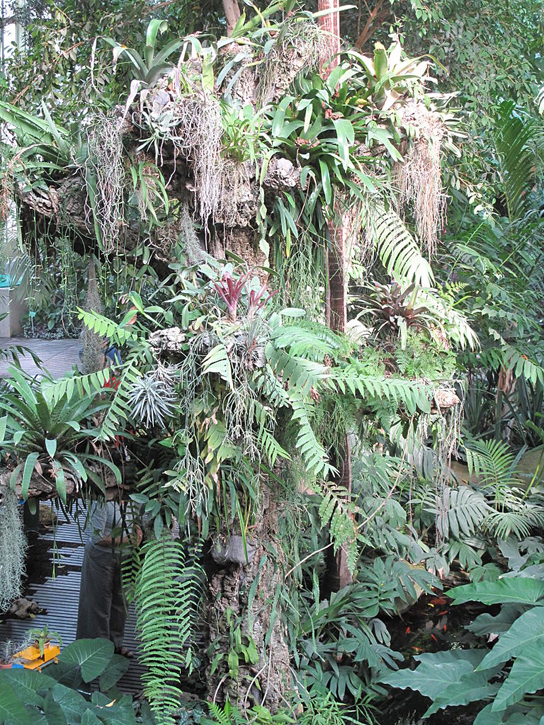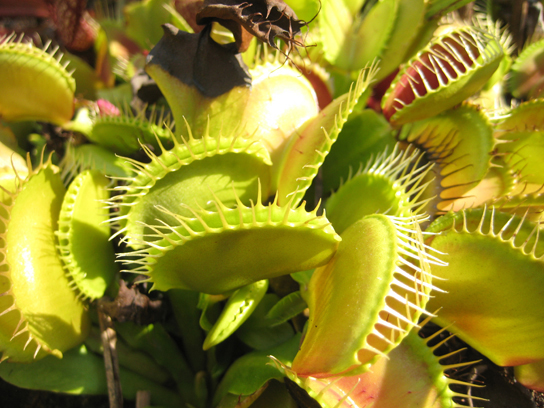| << Chapter < Page | Chapter >> Page > |
Some plants cannot produce their own food and must obtain their nutrition from outside sources. This may occur with plants that are parasitic or saprophytic. Some plants are mutualistic symbionts, epiphytes, or insectivorous.
A parasitic plant depends on its host for survival. Some parasitic plants have no leaves. An example of this is the dodder ( [link] ), which has a weak, cylindrical stem that coils around the host and forms suckers. From these suckers, cells invade the host stem and grow to connect with the vascular bundles of the host. The parasitic plant obtains water and nutrients through these connections. The plant is a total parasite (a holoparasite) because it is completely dependent on its host. Other parasitic plants (hemiparasites) are fully photosynthetic and only use the host for water and minerals. There are about 4,100 species of parasitic plants.

A saprophyte is a plant that does not have chlorophyll and gets its food from dead matter, similar to bacteria and fungi (note that fungi are often called saprophytes, which is incorrect, because fungi are not plants). Plants like these use enzymes to convert organic food materials into simpler forms from which they can absorb nutrients ( [link] ). Most saprophytes do not directly digest dead matter: instead, they parasitize fungi that digest dead matter, or are mycorrhizal, ultimately obtaining photosynthate from a fungus that derived photosynthate from its host. Saprophytic plants are uncommon; only a few species are described.

A symbiont is a plant in a symbiotic relationship, with special adaptations such as mycorrhizae or nodule formation. Fungi also form symbiotic associations with cyanobacteria and green algae (called lichens). Lichens can sometimes be seen as colorful growths on the surface of rocks and trees ( [link] ). The algal partner (phycobiont) makes food autotrophically, some of which it shares with the fungus; the fungal partner (mycobiont) absorbs water and minerals from the environment, which are made available to the green alga. If one partner was separated from the other, they would both die.

An epiphyte is a plant that grows on other plants, but is not dependent upon the other plant for nutrition ( [link] ). Epiphytes have two types of roots: clinging aerial roots, which absorb nutrients from humus that accumulates in the crevices of trees; and aerial roots, which absorb moisture from the atmosphere.

An insectivorous plant has specialized leaves to attract and digest insects. The Venus flytrap is popularly known for its insectivorous mode of nutrition, and has leaves that work as traps ( [link] ). The minerals it obtains from prey compensate for those lacking in the boggy (low pH) soil of its native North Carolina coastal plains. There are three sensitive hairs in the center of each half of each leaf. The edges of each leaf are covered with long spines. Nectar secreted by the plant attracts flies to the leaf. When a fly touches the sensory hairs, the leaf immediately closes. Next, fluids and enzymes break down the prey and minerals are absorbed by the leaf. Since this plant is popular in the horticultural trade, it is threatened in its original habitat.

Atmospheric nitrogen is the largest pool of available nitrogen in terrestrial ecosystems. However, plants cannot use this nitrogen because they do not have the necessary enzymes. Biological nitrogen fixation (BNF) is the conversion of atmospheric nitrogen to ammonia. The most important source of BNF is the symbiotic interaction between soil bacteria and legumes. The bacteria form nodules on the legume’s roots in which nitrogen fixation takes place. Fungi form symbiotic associations (mycorrhizae) with plants, becoming integrated into the physical structure of the root. Through mycorrhization, the plant obtains minerals from the soil and the fungus obtains photosynthate from the plant root. Ectomycorrhizae form an extensive dense sheath around the root, while endomycorrhizae are embedded within the root tissue. Some plants—parasites, saprophytes, symbionts, epiphytes, and insectivores—have evolved adaptations to obtain their organic or mineral nutrition from various sources.
[link] Farmers often rotate corn (a cereal crop) and soy beans (a legume) planting a field with each crop in alternate seasons. What advantage might this crop rotation confer?
[link] Soybeans are able to fix nitrogen in their roots, which are not harvested at the end of the growing season. The belowground nitrogen can be used in the next season by the corn.

Notification Switch
Would you like to follow the 'Biology' conversation and receive update notifications?